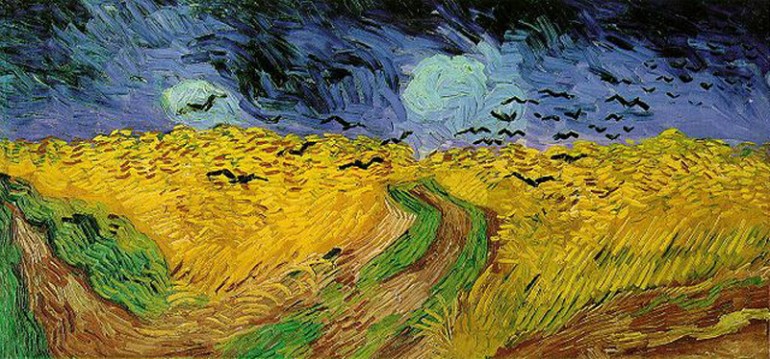Have you heard about President Barack Obama recent ostensible dismissal of the arts? The president of the world’s most powerful country seemed to have put a veil of uncertainty over the arts and humanities in the United States when, in a speech in an audience of supporters, he said that students would earn better incomes if they choose vocational education instead of art history degrees.
The exact Obama quote: “A lot of young people no longer see the trades and skilled manufacturing as a viable career … But I promise you, folks can make a lot more, potentially, with skilled manufacturing or the trades than they might with an art history degree.”
This apparent disinclination towards the arts slighted art historians and others in the similar field, worried about the future of the humanities with Obama at the helm. The comment from the president quickly elicited unfavorable reactions from students, university professors, and representatives of higher education associations. Columnists also had a feast over the perceived blunder.
Were the reactions justified? Only time will tell. If you are a big supporter of the arts, you would probably consider the remarks insensitive at the least. To this regard, perhaps a discussion on art appreciation and understanding is in order. What do you have to do to be more appreciative and understanding of the arts?
1. Don’t put yourself in Obama’s shoes. Don’t be preoccupied with concerns you find more pressing.
To President Obama’s credit, he quickly gave a qualification of the arts-offending portion of his speech by saying that there’s “nothing wrong with an art history degree.” “ I love art history,” he added. Nevertheless, the point is that when you are thinking like the president of a country with an uncertain economy, you would want to be more pragmatic. Arts is hardly about pragmatism.
It is difficult to appreciate art, aesthetic and emotional creativity, heritage, culture, and the humanities when your priorities are on restoring national economy and addressing political critics. Likewise, it’s hard understanding how artists and art historians feel when you are surrounded by political enmity. It’s just like watching fashion shows. You will likely think of fashion shows as ridiculous events if you are more concerned about increasing the debt ceiling, lowering unemployment, and raising GDP figures.
2. Focus on the emotion or expression as well as the history of the art.
If you look at the Gran Cavallo (Leonardo’s Horse), for instance, without examining all the difficulties encountered to finally produce such a marvelous piece of sculpture, you may not appreciate its marvel especially as you compare it to relatively modern sculptures that appear to be more refined, more detailed, and more polished. What creates the interesting appeal for most art works is the emotions and expressiveness put into them. If you ignore these emotions, you will probably be having a hard time understanding and appreciating art.
3. Have an open mind.
Allow your imagination to run wild. Have creative evaluations of different art works. Go beyond the face value of the work you are observing. A painting expresses more than just a thousand words. Sculptures are not just their intricate or realistic details. If you don’t limit yourself to what is immediately visible in front of you, you can explore the mind of an artist and try to understand the inspiration and intention of an oeuvre.
4. Don’t be scientific.
There’s a reason why the arts and sciences are two different fields. It is difficult to appreciate art if you are too devoted to the principles of the science. If you overanalyze painting strokes, seek perfection in a sculpture’s proportions, or demand a specific rhythm style and tempo in music, you will likely fail to see how art is art. Art does not require precision or accuracy.
5. Try to know the artist behind the work.
In many instances, it really helps if you try learning about who is behind an art creation. The artwork becomes more meaningful when you have an idea about who is behind it. Different artists have different styles and knowing who these artists are can make you derive different interpretations. However, don’t be too personally-centered. While the identity of the artist can help you understand an artwork better, basing your appreciation or evaluation mainly on personalities is not a good thing.
6. Take your time.
Sometimes you need some time to warm up to an art creation. You may be able to quickly come up with opinions or feedback upon seeing a painting, hearing a song, or observing a sculpture. However, there will be cases when you need to give it more time before you can finally understand and appreciate the artistry behind the work.
7. Don’t force it.
If you don’t really have a sense of art appreciation, don’t try too hard. Understanding and appreciating art is not something compulsory. Also, some pieces just don’t really look like art to some people. After all, art is not governed by accuracy and precision. It is mostly subjective and could even be arbitrary. Understanding and appreciating something based on standards set by others is simply pointless.
Attribution for image 1 / featured image – Image attributed to Vincent Van Gogh / Wikimedia.org
Acquista i migliori orologi replica di lusso su https://orologireplica.is offre orologi replica di Rolex, Panerai, Tag Heuer, Omega e altri a prezzi bassi.1:1 Best Quality Cheap Rolex Replica Watches UK Online Store. New Grade Swiss Movement Replica Rolex.
Les meilleures répliques de montres bon marché du Royaume-Uni AAA à des prix abordables peuvent être trouvées sur ce site Web.


